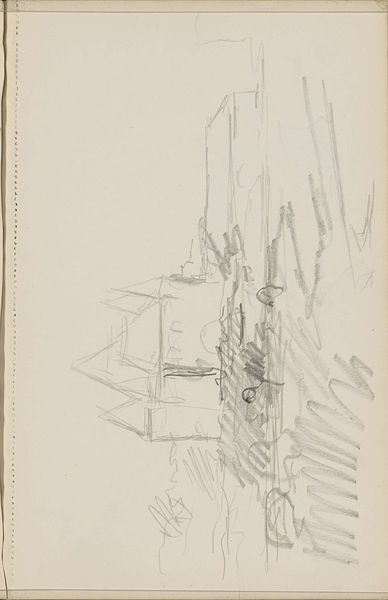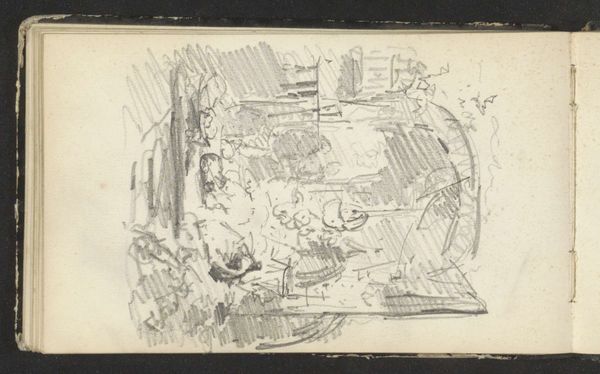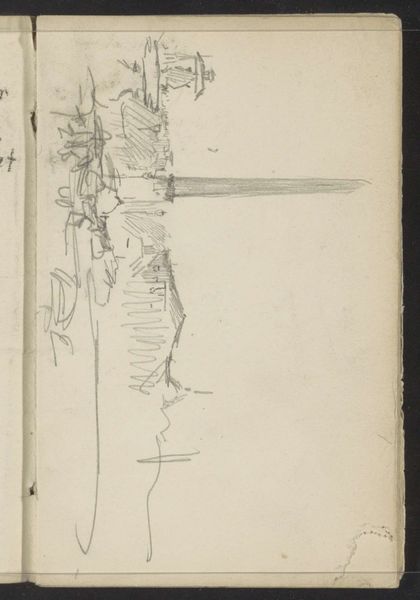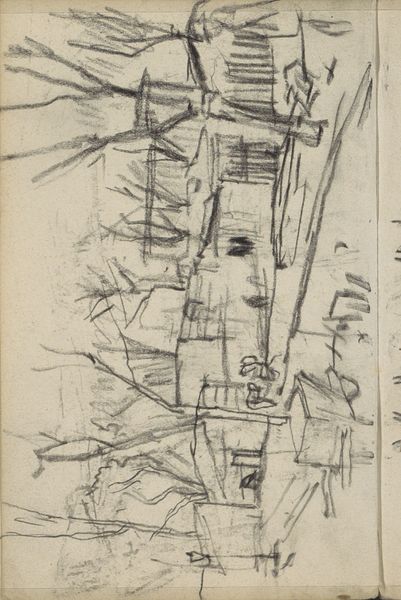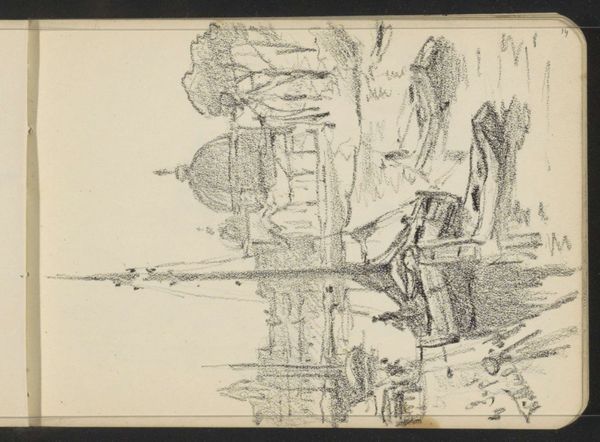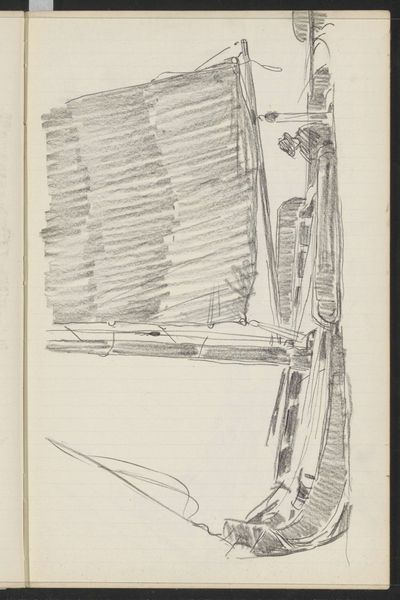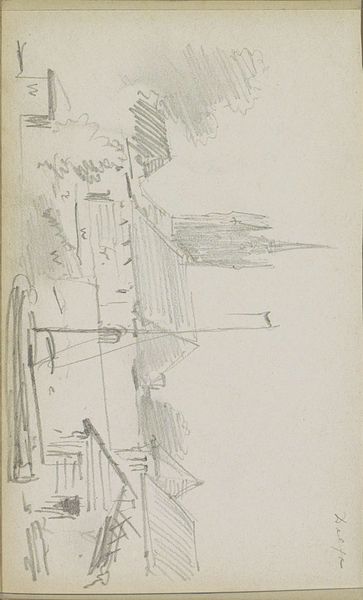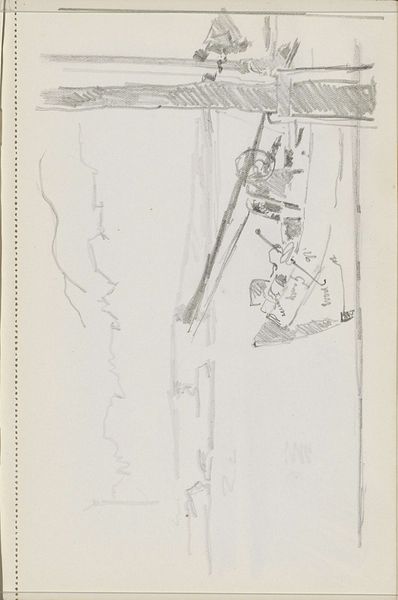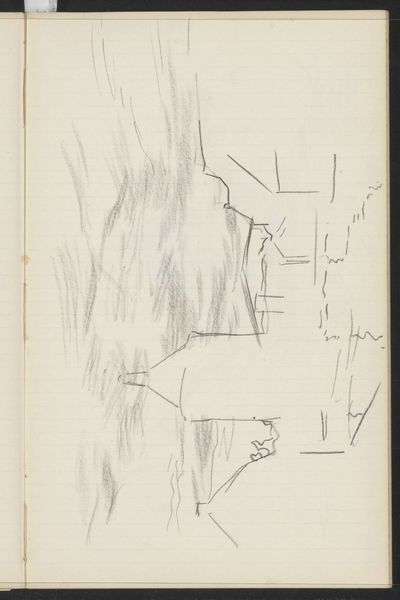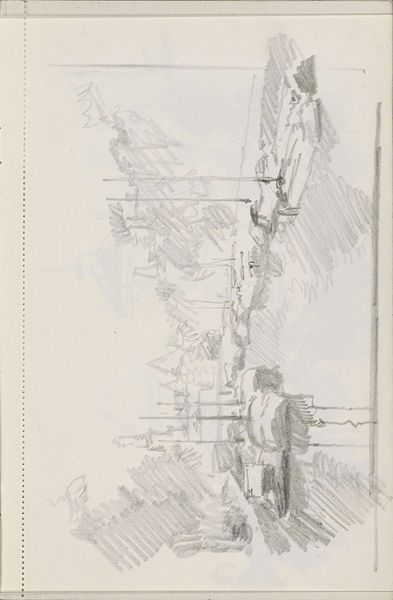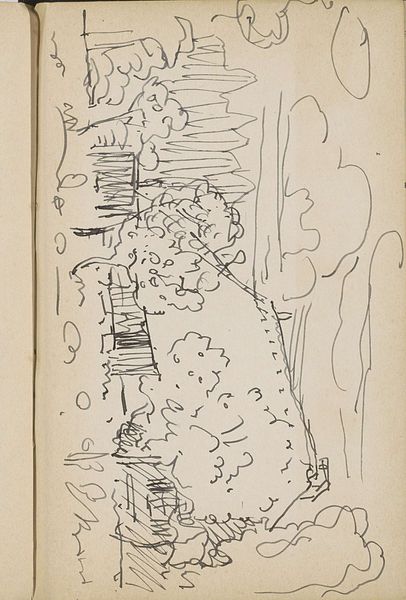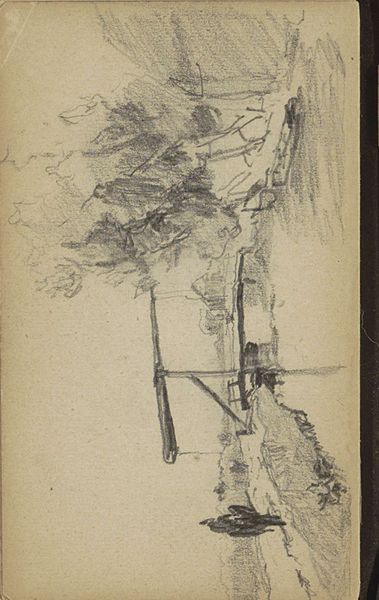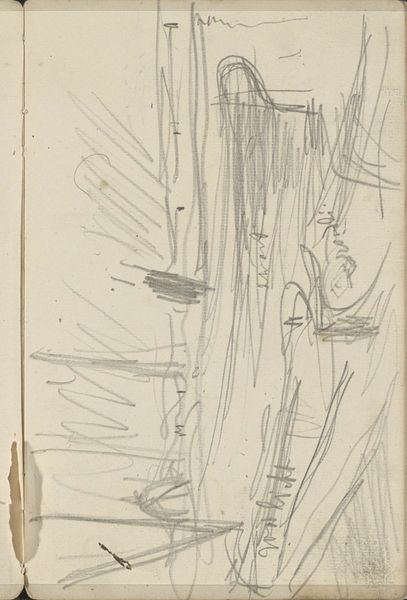
Twee mannen bij een werkbank in een steenhouwerij 1900 - 1931
0:00
0:00
Copyright: Rijks Museum: Open Domain
Curator: So, here we have a pencil drawing from Willem Bastiaan Tholen, "Two Men at a Workbench in a Stonemasonry," dating from the early 20th century. Editor: My first thought is the energy! It's just a flurry of lines, a quick capture of movement and labor. It feels very immediate. Like a stolen moment. Curator: Absolutely. Tholen's Impressionistic style really shines through. He is more concerned with capturing a feeling of the scene than hyperrealism. Notice how he uses short, broken lines to suggest form and texture, especially around the figures. The sketchiness, paradoxically, gives it life. Editor: I'm drawn to how the figures are positioned, almost lost within the setting. It really speaks to the symbolism of labor itself—individuals almost consumed by their task and surroundings. Stonemasonry too, as a craft, has a history linked with secrets and knowledge. Does this composition say something about that? Curator: That’s a perceptive insight. The way they’re immersed, almost faceless, shifts our focus away from individual personalities. Stone itself has always been associated with permanence, labor and monumentality, and here, even in this simple drawing, Tholen conveys those qualities. I see, in the downward tilt of the image too, how perhaps he’s positioning the labourer on the same level of consideration of nature, as landscape. Editor: It certainly removes the classical sense of hierarchy, placing the human figure humbly within an environment and job, even an artistic process too. Are these people Tholen observed directly, perhaps, or archetypes that we carry culturally and associate immediately to physical and manual labour? Curator: Very possibly a direct observation, perhaps drawn en plein air to try and ‘capture the now’ moment as much as possible. What resonates most, for me, is the raw, honest portrayal of work. It's not romanticized; it's just there, the sweat and grit, the kind of labor that shapes the world around us, even metaphorically to how our individual endeavours make us ‘who’ we are. Editor: And that raw honesty gives it a timeless quality, despite being of a specific period. These men could be working at a bench a century ago or today; that element persists. Curator: Precisely. It is indeed a small glimpse into the universal language of human effort, rendered with a gentle hand and simple, modest medium of expression.
Comments
No comments
Be the first to comment and join the conversation on the ultimate creative platform.
